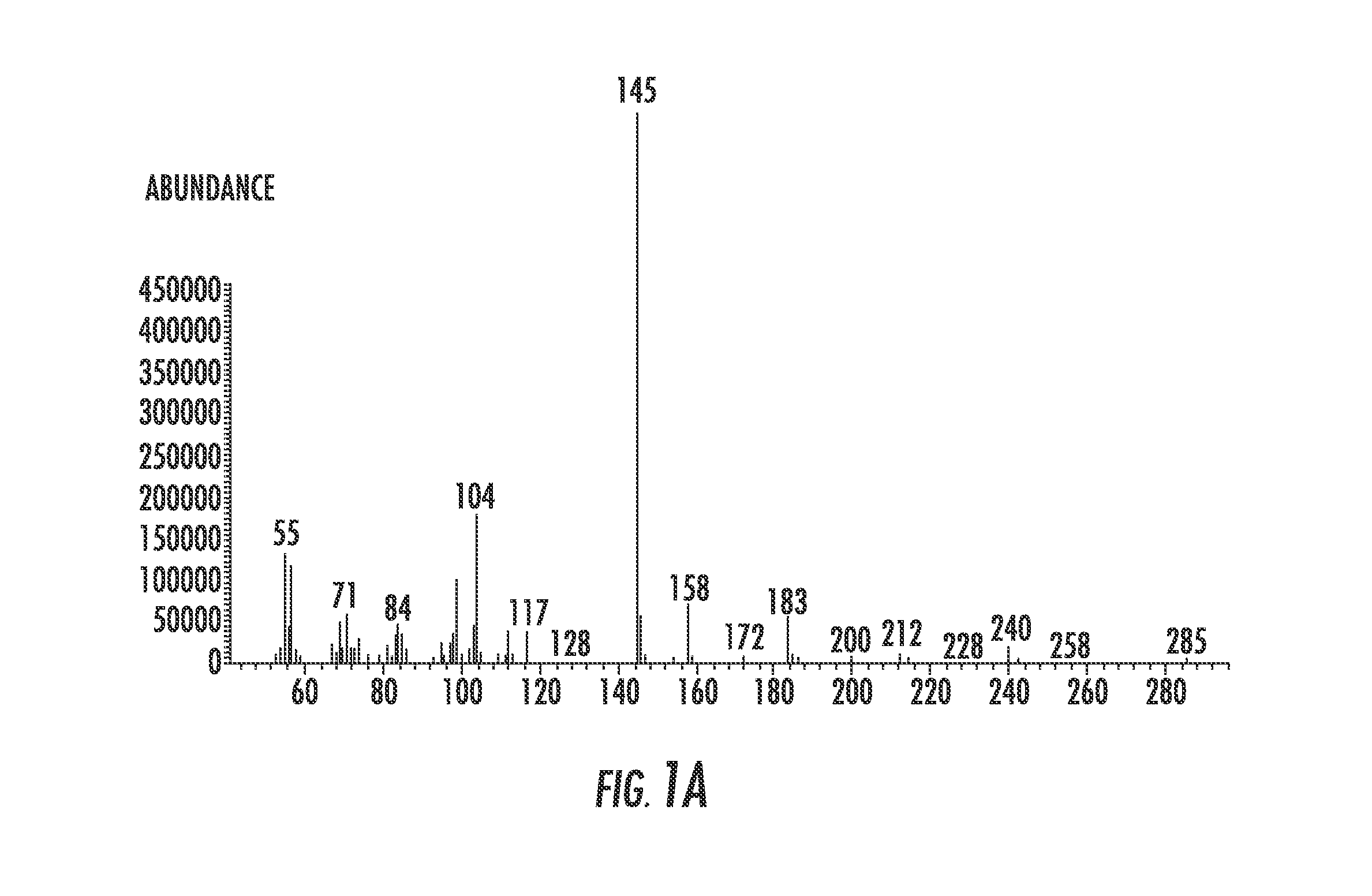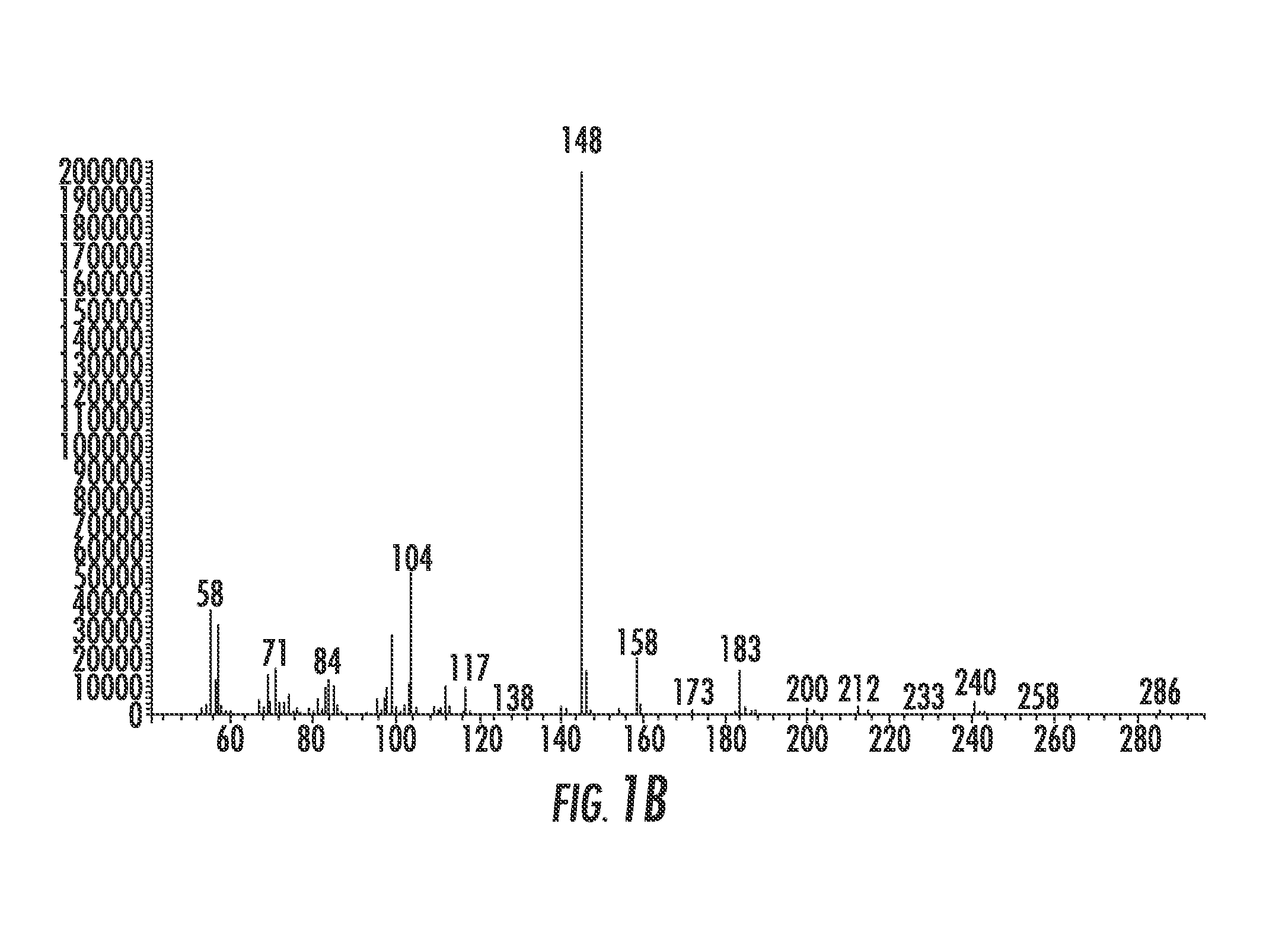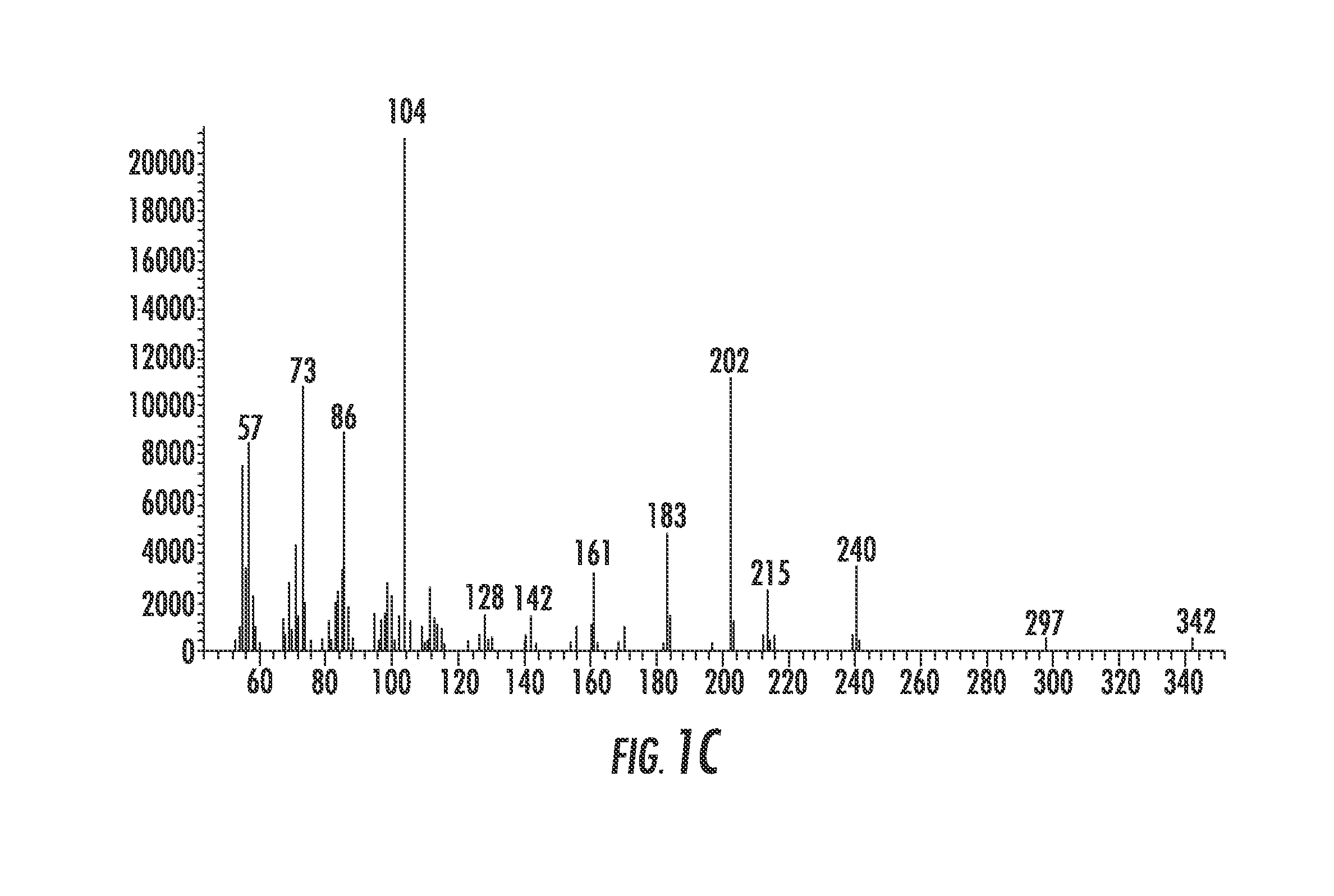Preparation of lipoamino acids and lipopeptides using salts as co-reactants
a technology of lipoamino acids and lipopeptides, which is applied in the direction of peptides, peptide/protein ingredients, amide group formation/introduction, etc., can solve the problem that phosphate was essentially unavailable for prebiotic chemistry
- Summary
- Abstract
- Description
- Claims
- Application Information
AI Technical Summary
Benefits of technology
Problems solved by technology
Method used
Image
Examples
examples
[0048]Heating in a manner similar to that used to produce peptides from amino acids was chosen as the simplest means for testing the possibility of forming dehydration condensation products between fatty acids and amino acids, thereby coupling the two proposed worlds: the Peptide World and the Lipid World. The first successful experiment that produced a lipoamino acid, N-laruoylglycine (LG) gave only 0.4% of the desired product. Evaluation of several variables provided more advantageous conditions for the formation of these types of compounds. While experiments with numerous agents were by-and-large negative, magnesium sulfate and magnesium carbonate produced high yields of LG. This corresponds with other recent findings that magnesium salts are superior to those of strontium, barium or lithium for the polymerization of glycine and far superior to salt-free dehydrations. Temperature and time experiments indicated that higher temperatures even above 150° C. and longer times up to sev...
PUM
| Property | Measurement | Unit |
|---|---|---|
| Temperature | aaaaa | aaaaa |
| Temperature | aaaaa | aaaaa |
| Length | aaaaa | aaaaa |
Abstract
Description
Claims
Application Information
 Login to View More
Login to View More - R&D Engineer
- R&D Manager
- IP Professional
- Industry Leading Data Capabilities
- Powerful AI technology
- Patent DNA Extraction
Browse by: Latest US Patents, China's latest patents, Technical Efficacy Thesaurus, Application Domain, Technology Topic, Popular Technical Reports.
© 2024 PatSnap. All rights reserved.Legal|Privacy policy|Modern Slavery Act Transparency Statement|Sitemap|About US| Contact US: help@patsnap.com










